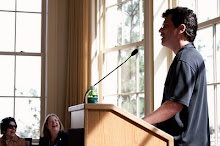(c) Arnold Perlstein 2010
I have on dozens of occasions taken every opportunity to tout Colleen Sheehan’s tour de force in discovering the secret “Prince of Whales” solution to the second charade in Chapter 9 of Emma (Emma’s answer for which being “courtship”), as she detailed her discovery in the following 2006 Persuasions Online tandem articles:
http://www.jasna.org/persuasions/on-line/vol27no1/sheehan.htm
What I have cited only occasionally is another Persuasions article that Colleen published in the 2000 print version of Persuasions, a reference to which is shown at the following URL, but not the text of the article itself:
http://www.jasna.org/persuasions/printed/pers22.html
As you can discern, the title of Colleen’s earlier article was “The Riddles of Emma”, and in it, among other discoveries, she gives the rationale for her discovery of a second, secret answer to the FIRST charade in Chapter 9 of Emma (the one to which the standard answer, although, curiously, never actually given in the novel, is “woe” + “man” è “woman”).
Colleen claims that the secret second answer to that first charade is “heartfiel”, and she goes through a wonderful chain of inferences to reach that outcome, as she weaves in the Shakespearean subtext of Emma which Jocelyn Harris first brilliantly wrote about in 1986 in her pioneering Art of Memory book. Among Colleen’s observations is the following:
“Just as an answer to the first charade is "heartfiel" or the heart's ease, "heart's-ease" is also the name of the hypnotic flower in Shakespeare's play Another name for this magical flower is "love-in-idleness."
In my mind, up till today, I have always ranked Colleen’s achievement in decoding the “Prince of Whales” solution to be a quantum level more amazing than her “heartfiel” solution---that was, until an hour ago, when I was reviewing my last message titled “The Ingenuity of Man….and Jane Austen” to see if I made any blunders.
Instead, my memory was jogged back by something I had written in my message to something related which Colleen wrote in her 2000 article, and which, as I recall, she had also mentioned to me, with justified pride, during one of our many delightful telephone brainstorming sessions during 2005 when she made her “Prince of Whales” discovery.
Here’s what I recalled from Colleen’s article:
“If we are willing to play along with Austen, and continue the game of anagrams played in Volume Three, applying it to the charade we have unlocked, we discover the core of the danger lurking at Hartfield. The anagram of "Heartfiel" is "Real Thief."
Colleen then went on to give an ingenious and witty rationale for suggesting that JA was depicting Emma’s imagination as the “real thief” :
“Emma's imagination, fanned and fueled by an intemperate and fiery spiritedness, made her vain, unjust, and incapable of forming genuine friendships or a true or lasting love. More than any of Austen's other heroes or heroines, Emma was in need of a degree of humbling which would temper her vanity and transform it into proper pride. Ultimately, this is accomplished in Volume Three, chapter seven of the novel, at Box Hill, a location seven miles from Highbury where, excluding the obstreperous Emma and Frank, a party of seven silent people (we are twice told) spent the afternoon picknicking. Box Hill, the author reveals, is a location within shouting distance of Dorking on the one side and Mickleham on the other (369). Ironically under the cooler shades of this hill, (4) where Emma's vanity receives its ultimate and conclusive blow or boxing, is still today nestled a little village by the name of "West Humble." (5)
Even though I did not find this part of Colleen’s argument as convincing as the others, I found it so clever and witty that I gave Colleen the benefit of the doubt, because the JA I know was indeed a lover of clever wit of exactly that kind.
But it was earlier this afternoon, as I was rereading my message, which is all about Knightley as the “thief” who “steals” Emma, when it shot like an arrow through my brain, and lit up Colleen’s “real thief” discovery in bright neon lights—of course! JA is telling us, with that first charade’s secret answer, “heartfiel”, that Knightley is the “REAL thief”!!!
Cheers, ARNIE
P.S.: Another tidbit from Colleen’s article might just be relevant to my discussion yesterday of Henry Crawford’s (and Lovelace’s) sacrilegious quotation of the Biblical Proverb about the “bread of idleness”. I have a hunch that Shakespeare and JA (and who knows, maybe Richardson as well, since he knew his Shakespeare pretty well, too) each was thinking, in part, of that Proverb when they were writing Midsummer Night’s Dream and Emma, respectively.
Popular Posts
- Deirdre Le Faye & Me: "I am a scholar, she is a scholar: so far we are equal"
- Darcy's "We neither of us perform to strangers": a Radical New Interpretation
- The Hunger Games’s Veiled Allusion to Shakespeare’s Titus Andronicus
- Rick Santorum would have been the worst person in the world to Jane Austen too!
- August Wayne Booth in Once Upon A Time: Jane Austen Really IS Everywhere in 2012!
- 20 shades of hero/villain Mr. Darcy
- Can Jane Austen forgive Marianne?
- Miss Bennet, Elizabeth, Lizzy, Eliza: who calls her what....and why
- The Great Gadsby: an overnight lesbian feminist ‘comedy’ sensation 10+ years in the making (& 3 millenia overdue)
- Austenland: The Movie was Fun, but the Novel was Better [SPOILER ALERT as to both]
Wednesday, March 3, 2010
Subscribe to:
Post Comments (Atom)

No comments:
Post a Comment